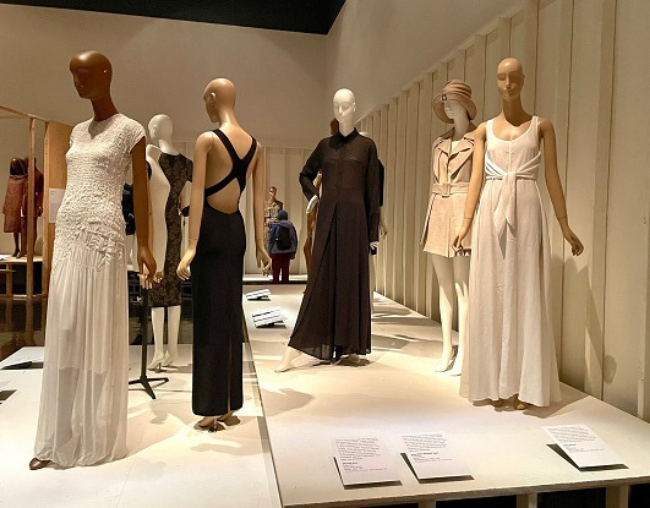
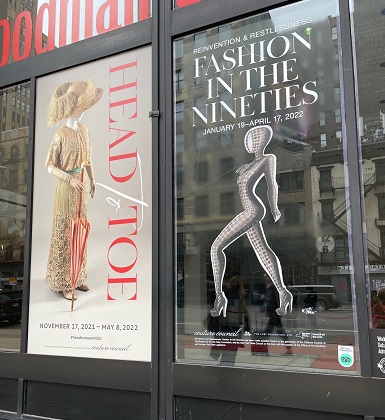
If I am in New York and hear of an exciting fashion exhibit, I make a mad dash to it. This month I had the great pleasure of being in Manhattan and couldn’t wait to visit, mask and all, the Fashion in the Nineties show at the Museum at FIT, the Fashion Institute of Technology. What a wonderful place to escape to from a world constantly in flux.
The Institute is known internationally as a leader in fashion and design for over 75 years. This amazing museum is home to over 50,000 garments and accessories dating from the eighteenth century to the present. It was a fantastic opportunity to see all kinds of fabulous creations assembled from wondrous fabrics!
You don’t need to be a fan of ’90s design to be elated by the fashion in the current exhibit assembled by Colleen Hill, the museum’s Curator of Costume and Accessories. Describing this decade as “Reinvention & Restlessness,” the Institute presents an impressive display of enthralling threads.
The dresses exhibit creativity at its best, paying homage to a decade that would end a century.
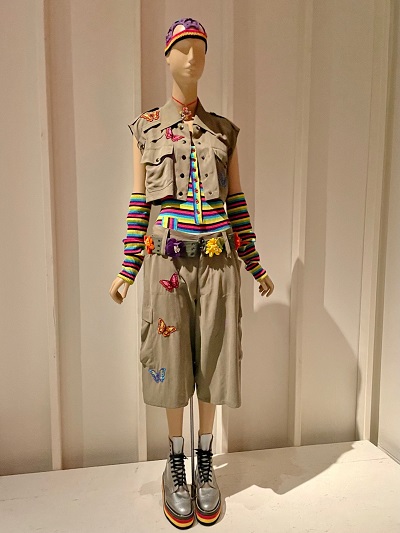
The Grunge music movement fostered an anti-fashion approach in the early ’90s. As you can see in the ensemble by Anna Sui, 1993, this was no matchy-matchy look.
In fact, the more second-hand and thriftshop-looking, the more popular grunge clothing became. Anna’s garments were often military-inspired with a touch of ’60s hippie.
Love the addition of butterflies to the ensemble gifted by Sui to the Museum.
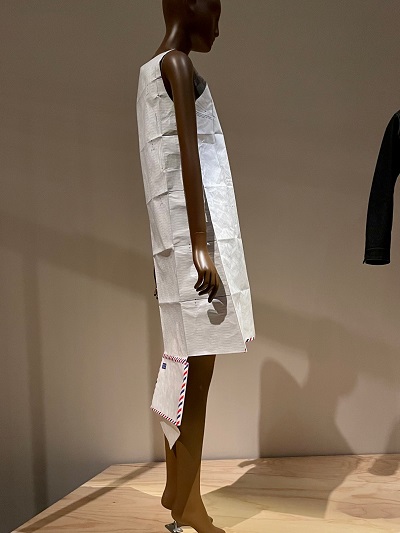
As a contrast to Grunge, other memorable garments took center stage. Take a look at the Airmail dress of 1993 by Hussein Chalayan.
This unique creation was made from Tyvek® often used to make shipping envelopes. In fact, it could even be folded up and sent in the mail.
Notice the rectangular envelope attached to the “hem” in the back.
I was struck by one simply elegant dress as I entered the exhibit, a Gucci creation featured
in their section Reinvention: The Revival of Luxury.
The Institute’s Fashion in the Nineties book comments the mid ’90s brought back a “new form of luxury.” It was personified in Tom Ford’s creations during his years at Gucci.
Rich-looking garments swept the runways with the simplest of accessories as you can see in this white gown with its uniquely designed belt. The look was sexy, flowing and flattering.
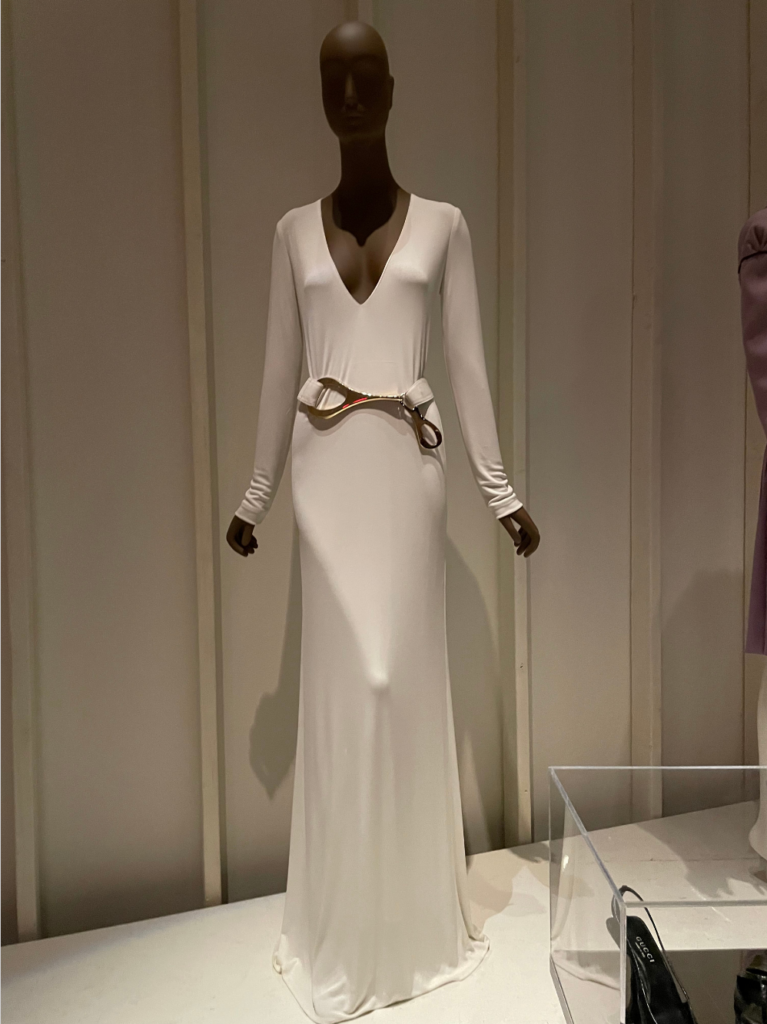
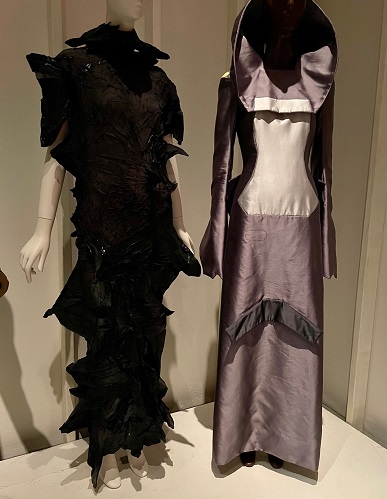
Under the book’s heading Restlessness: Technology, futuristic clothing made its entrance in this decade. A millennium was approaching as well as the growing popularity of the internet.
“Techno couture”reflected a general thrust toward space-age futurism as fashion journalist Alexander Fury noted. Simon Thorogood created the multilayered dress seen here. Long sleeves covered the wrists and hands, and the high neckline hid the face.
The dark grey satin emphasized the look of metal and machinery. As the collection’s book noted, Thorogood “took this idea directly from the Stealth, which is radically different from other airplanes.”
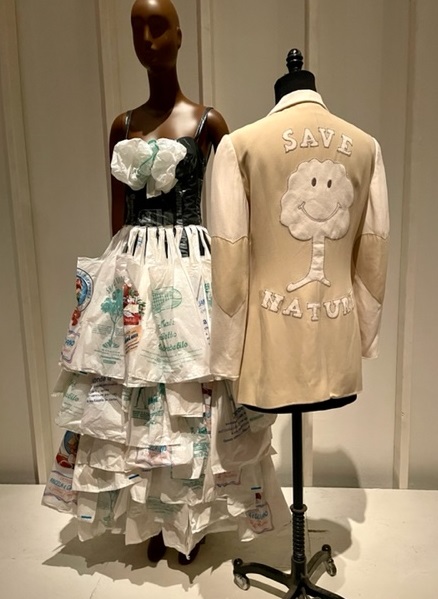
The ’90s also introduced an emphasis on the environmental movement. Designers took on causes, putting slogans on clothing like SAVE NATURE. Moschino launched Ecouture! in 1994, which included items made from environmentally-conscious fabrics.
The jacket seen here is in Moschino’s “Cheap and Chic” ready-to-wear line, 1994, and made with unbleached cotton. The smiling tree and SAVE NATURE lettering became slogans for the collection.
The evening dress to the left is made from plastic trash liners and carrier bags and was meant to make a statement about waste. This is part of a collection called “Chaos.”
Not only was retro revived but also the historically-inspired styles of previous times. This yearning for nostalgia in any form was also prevalent in ’90s culture.
I must admit my favorite creation was the gown by Yoshiki Hishinuma inspired by mid-nineteenth century fashion for hoopskirts. It reminded me of the Victorian era when dresses with elaborate draping were popular; petticoats plentiful; sleeves fit tightly; and trains added an extra elegance.
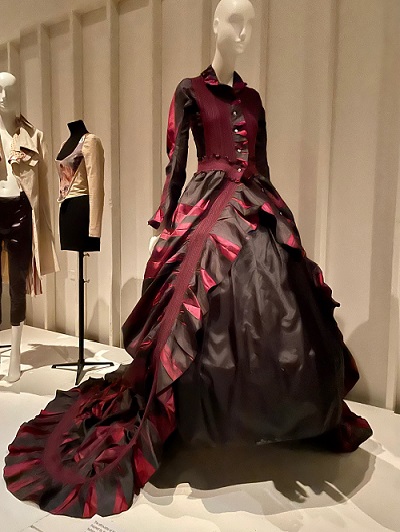
The Institute describes the red and black fabric as combining shipori, a traditional Japanese craft using a tie-dye technique, with a heat-set method creating added texture. Quite show-stopping!
You can see by the eclectic fashion why FIT used the words “Reinvention & Restlessness” to describe their Fashion in the Nineties exhibit. It reflects the contradictions and trends of the decade that was the end of one century and soon the beginning of another. Change was coming but people were still yearning for the past.
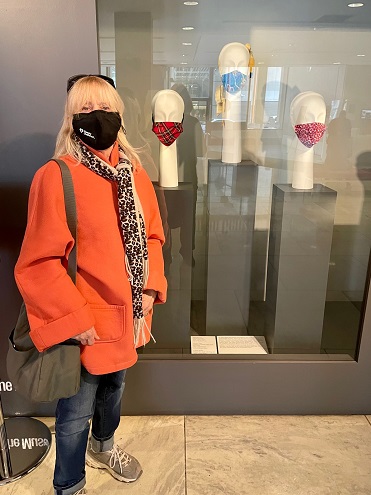
As I was leaving, I noticed FIT’s display of masks, certainly a fashion statement which will come to represent the early years of the twenty-twenties decade. You can visit this fascinating exhibit until April 17, 2022.
I leave you with the iconic “Tabi” boot, inspired by socks worn with thong sandals in Japan. They were shown with a spring 1990 collection and had been made for the previous season. Since the designer could not afford to make new shoes, he updated the boots with a thick coat of white paint! When it comes to fashion, one’s imagination is limitless whatever the decade.
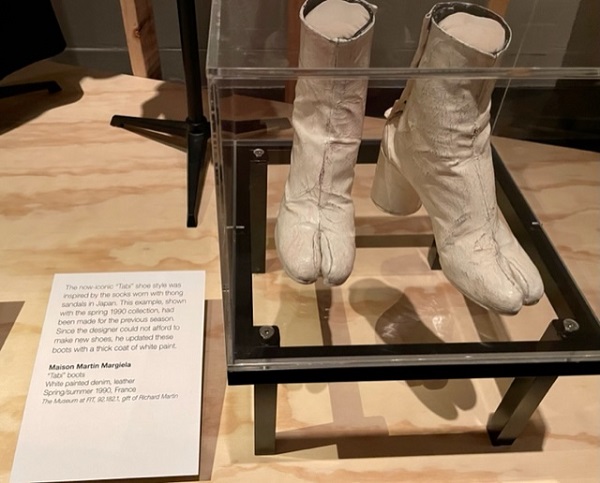
The next Museum event is “Shoes,” beginning September 1, 2022 (on the FIT page, click the Upcoming button). They will be displaying 400 pairs of shoes from their permanent collection of 4,000. Can’t wait!
Lead Photo: Dresses designed by Anne Klein (Richard Tyler), Michael Kors, and others
Photos: P. Burke
For more info:
Website: The Museum at FIT
TWITTER: @museumatFIT
Instagram: @museumatFIT



Leave a Reply